Cross-sell recommendation email
Post-purchase recos lift AOV by 12 % on average. This template shows how to present complementary products without feeling pushy.
10 Stunning Mockups of Cross-sell recommendation email template
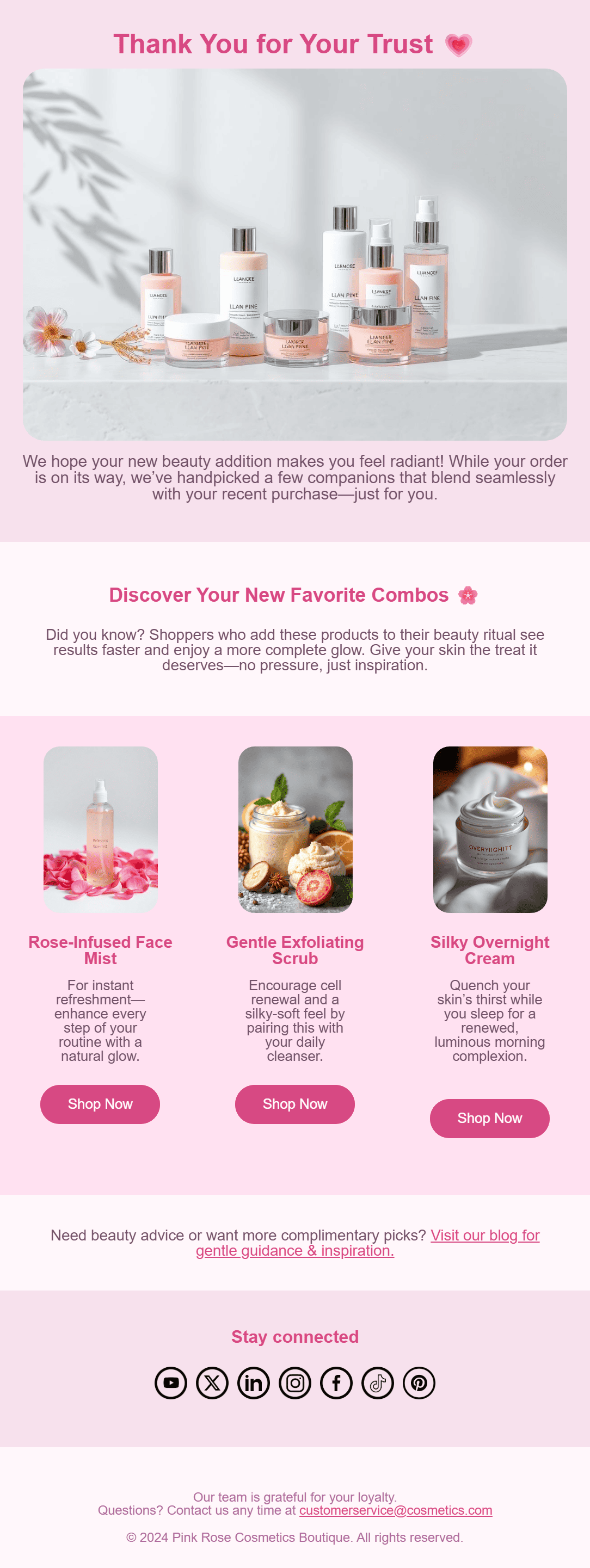
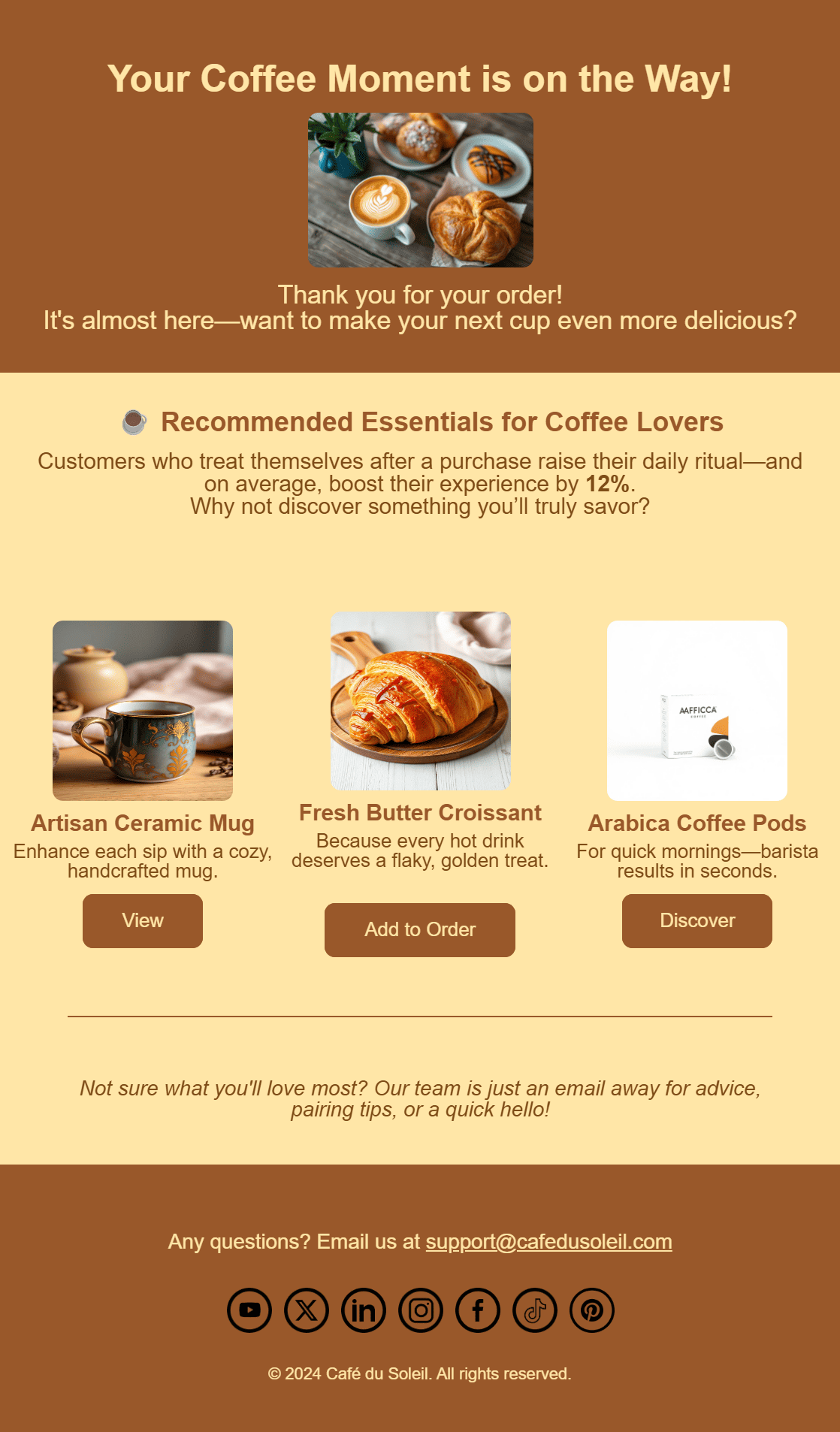
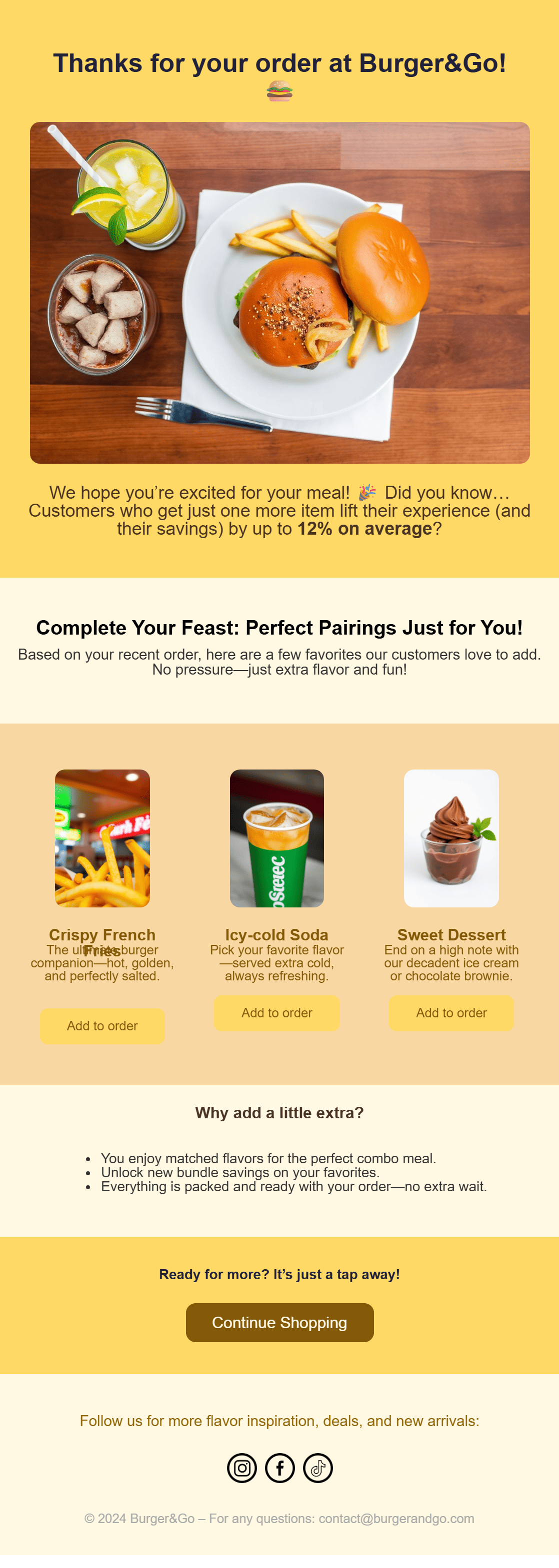
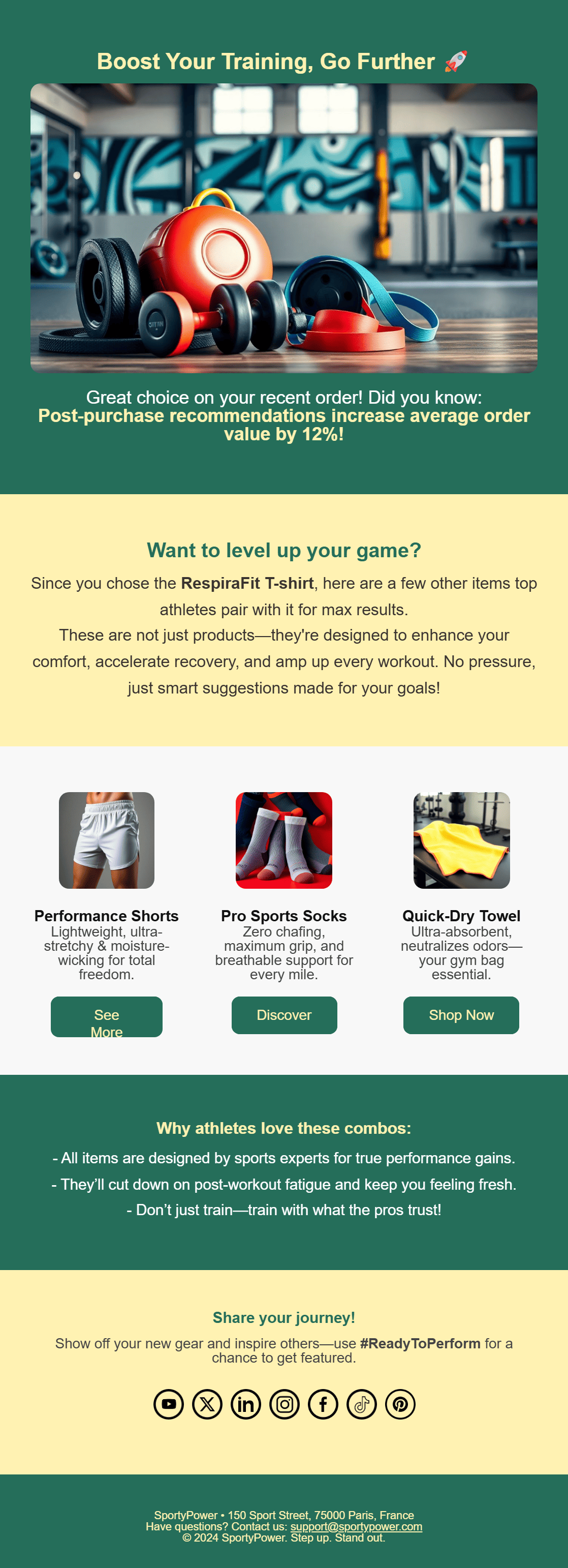






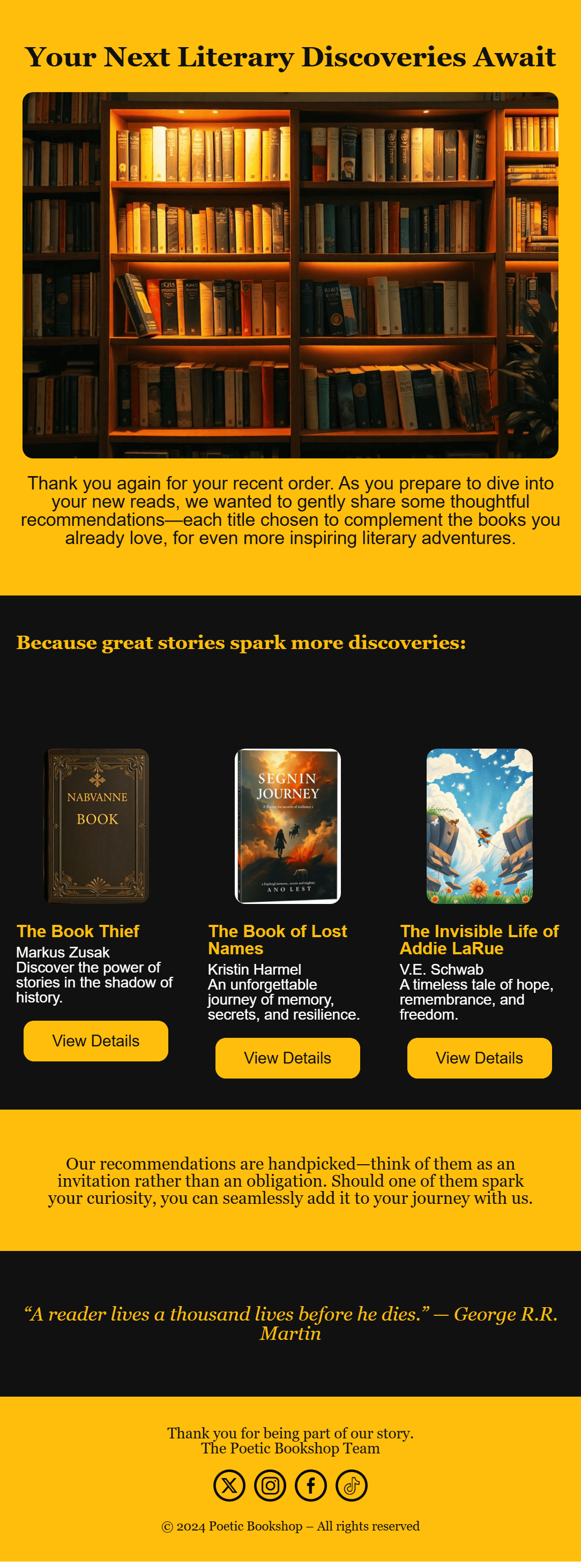
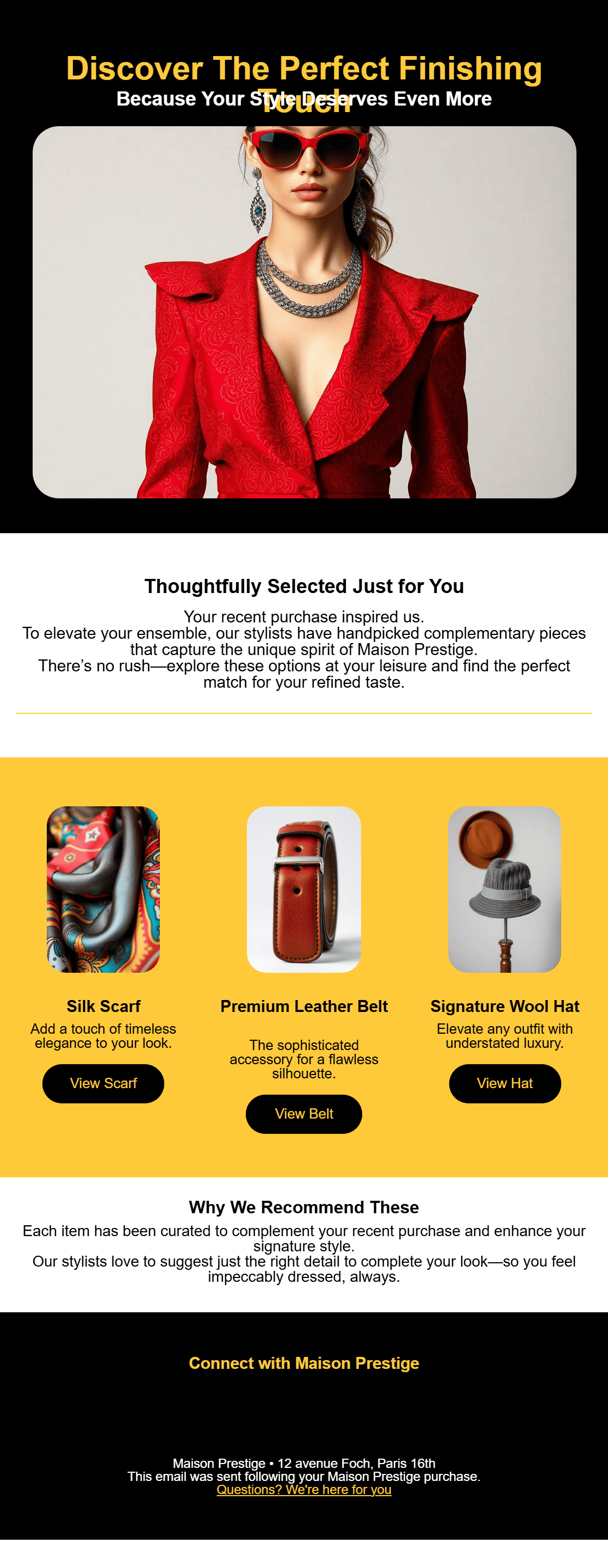
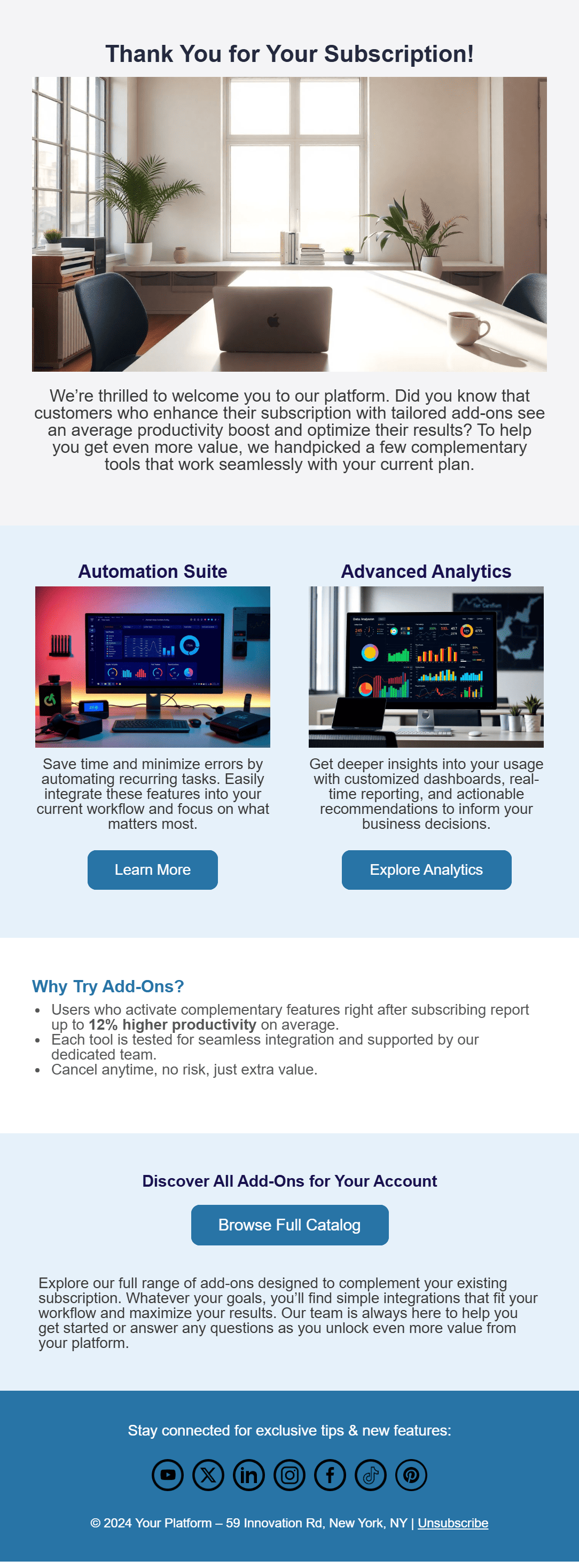
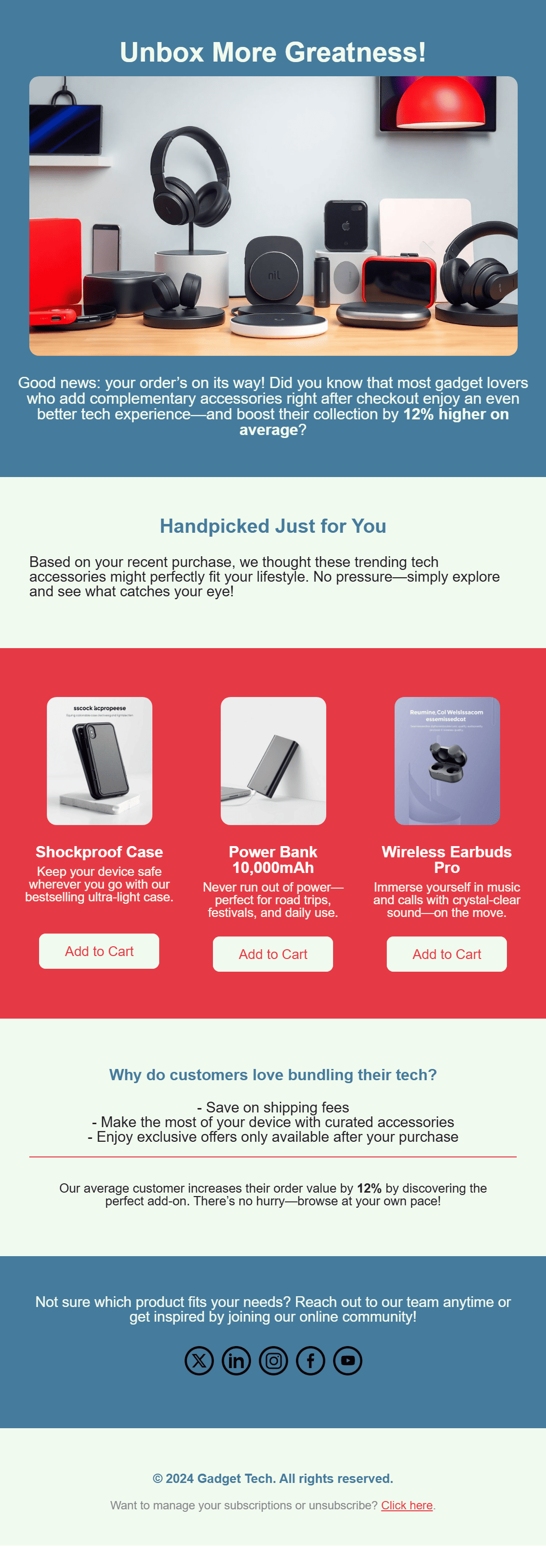






What is a cross-sell email?
A cross-sell email suggests add-ons or accessories that enhance the customer’s recent purchase, driving repeat sales and satisfaction.
Why cross-sell emails matter
Revenue lift:
Cross-sell emails drive 10–15 % higher average order value by surfacing complementary products right when the buyer is most engaged (Shopify, 2025).
Customer success:
Smartly timed suggestions for compatible items (e.g. chargers, cases) reduce return rates by 8 % by ensuring customers get everything they need in one go.
Personalisation:
Using real-time purchase data to trigger dynamic recommendations leads to 2.3× more clicks and higher satisfaction.
Long-term value:
Customers who receive relevant cross-sell offers during the first purchase are 25 % more likely to make a repeat purchase within 60 days (Salesforce, 2024).
How to do it in 5 easy steps
- 1
Trigger send 3–5 days post-purchase when excitement is high.
- 2
Pull purchased SKU and map to complementary items via tagging.
- 3
Show 3 product cards max, prioritising relevance over margin.
- 4
Include trust badges (ratings, reviews) under each item.
- 5
Offer bundled discount (‘Add all & save 10 %’).
Best Practices
1. Lead with use-case
Don’t just show products, connect them to the customer’s initial purchase. Explain how the recommended items improve or complete what they just bought.
What's good: "Protect your new phone with these cases."
Tip: Use second-person copy (*you*, *your*) to stay customer-centric and create relevance.
2. Cap choices
Too many product suggestions create cognitive overload and reduce clicks. Limit yourself to 3–4 carefully chosen items to keep the email scannable and actionable.
Tip: Add a ‘View more’ link to a curated collection page instead of overcrowding the email.
3. Time-bound incentive
A limited-time offer (e.g. 72h) adds urgency and nudges action, especially for low-cost, high-margin add-ons, without undermining brand value.
Tip: Use countdown language like *“Ends in 2 days”* to subtly increase pressure.
4. Use purchase-triggered logic
Send cross-sell emails automatically based on what was just bought. Timing matters: send within 1–2 days post-purchase while the customer is still excited.
Tip: Use tags or SKUs to map each product to logical add-ons and automate the flow.
10 High-Converting Welcome Email Subject Lines
- Complete your setup with these picks
- Customers also bought…
- Perfect partners for your recent purchase
- Upgrade your gear in one click
- Add these while shipping is still free
- Get the most out of {{product_name}}
- Recommended for you
- Bundle & save 10 %
- Level up your experience
- Don’t forget these accessories
Frequently asked questions
How soon after purchase should I cross-sell?
**3–5 days post-purchase** is the sweet spot. At this point, the product is either just delivered or about to be, and the customer is still emotionally engaged, ideal for surfacing complementary items before they mentally ‘close the loop’.
Is a discount necessary to drive cross-sell?
Not always. While **limited-time discounts can boost urgency**, many customers convert simply because of **convenience and relevance**. Curated suggestions based on their purchase often feel helpful, not pushy. A/B test both approaches.
What types of products work best for cross-sell?
Accessories, consumables, or **items that enhance the primary purchase** (like cases, refills, or extensions) perform best. Think of what someone might logically need **next**, not just what you want to push.
How many products should I recommend?
Stick to **3–4 tailored items**. This keeps the email clean and focused. Too many choices can lead to indecision and lower click-through rates. If you want to showcase more, link to a broader collection page.
Should I use dynamic recommendations?
Yes, **dynamic, behavior-based product suggestions** outperform static ones. Use customer purchase data, cart history, or browsing behavior to surface items they’re more likely to want.
How do I track cross-sell email success?
Track metrics like **click-through rate**, **conversion rate**, and **average order value uplift**. For deeper insights, segment performance by product category or customer cohort to see what resonates best.
